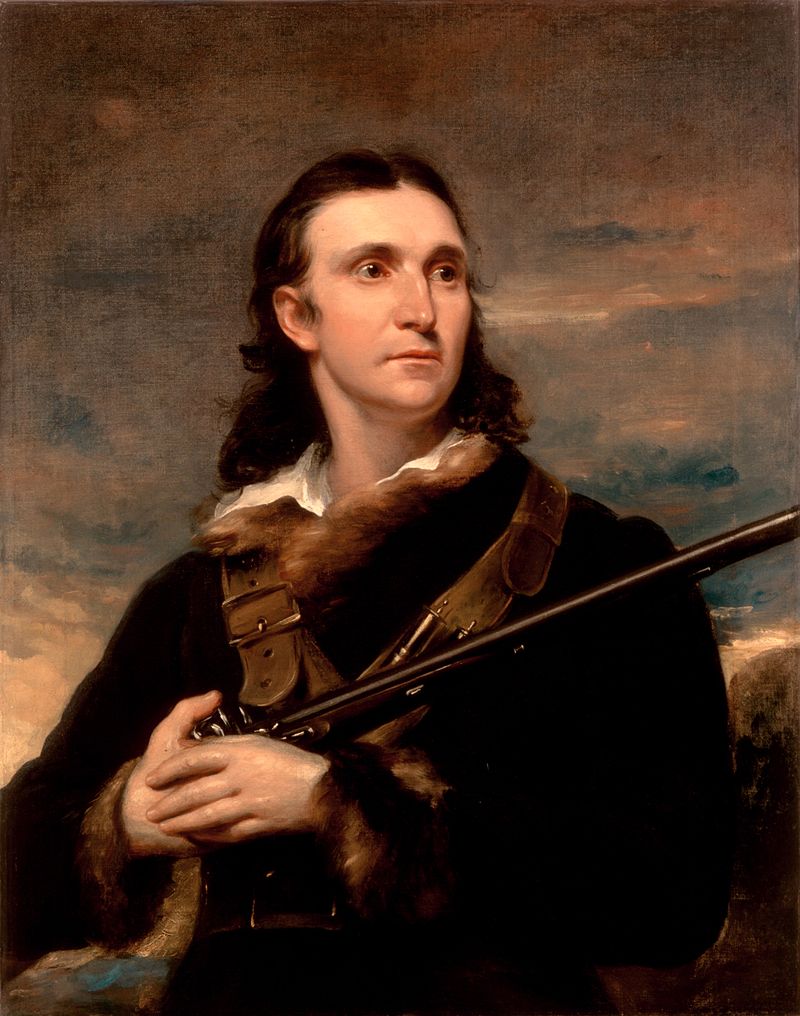This is Part Three of a three-part post. Click below to read earlier parts: Part One Part Two
Today Crystal Bridges’ opens the new temporary exhibition John James Audubon and the Artist as Naturalist, in our North Gallery. The main focus of the exhibition is a major new art acquisition: John James Audubon’s oil painting Wild Turkey Cock, Hen and Young (1826). Wild Turkey (ca. 1845), on loan from the Gilcrease Museum, is an almost identical copy of the first plate of his book. The exhibition also features the New York Historical Society’s portrait of Audubon by his son John Woodhouse Audubon, as well as Crystal Bridges’ double elephant folio copy of Audubon’s Birds of America, re-issued by his son in 1861.
Audubon’s final inspiration to publish his bird illustrations, including his Wild Turkey, came in September 1825, when he received the first volume of his ornithologist friend Charles Bonaparte’s (nephew of Emperor Napoleon) American Ornithology, which included Audubon’s field observations of the wild turkeys. This event motivated Audubon to go to Europe to exhibit and publish his own collection. Audubon wrote of his plans for Birds of America in a letter to Lucy, explaining that he wanted the images to be “all the size of life and in the same size paper [as] my largest drawings, that is called elephant.” In Edinburgh, Audubon was introduced to William Lizars, one of Scotland’s best engravers at that time. On November 10, 1826, Lizars engraved Audubon’s first plate: the wild turkey cock. Printing the works was a challenging and time-consuming process that involved the transfer of the watercolor studies onto large, expensive copper plates using sharpened steel pens, occasional aquatinting (tonal etching), and hand-coloring of the printed sheets with difficult-to-find colors. After several delays, Audubon replaced Lizars with Robert Havell, a master engraver from London.
Audubon constantly faced the problem of raising money to support his project. His three sources of income were admission fees from his exhibitions of watercolors and drawings (which later included colored engravings), subscription sales, and the sale of his oil paintings (so-called “potboilers”). He had painted only a very few oil paintings until his arrival in the United Kingdom. Crystal Bridges’ Wild Turkey Cock, Hen and Young (1826) was the first oil painting Audubon created in Edinburgh—and the painting marks the beginning of an important phase in his career when he was approaching his full maturity as an artist. After Wild Turkey Cock, Hen and Young, Audubon’s creation of oils was in full bloom.
Audubon also realized that oil paintings could be great gifts for individuals and institutions that supported him. He gave this painting of the wild turkey family to the Royal Institution in Edinburgh as a thank-you for letting him exhibit his 400 drawings of about 2,000 birds free of charge. The Edinburgh Evening Courant of Monday, December 4, 1826, reported enthusiastically: “his ardour is as great as ever, his oil painting of the wild turkey of America, now in the Royal Institution is worthy of a place in any collection.” Audubon was pleased to have received the recognition as an artist he was hoping for, and he must have realized the profitable potential of oil versions of his wildlife scenes. He mentioned in his journal on December 24 and 25: “Gally, the picture dealer, offered me a hundred guineas for it [the Wild Turkeys] the previous day, and I was glad to return some acknowledgment of the politeness of the Institution in a handsome manner.”
(Editor’s Note: In fact, Audubon was a great social success in Edinburgh, with his long hair and good looks. He was seen as the prime example of an American backwoodsman, and he played this up somewhat shamelessly by appearing everywhere decked out in a fringed buckskin coat. He also was a great storyteller of his adventures in the backwoods of America, though these may have been embellished somewhat….)
After painting Wild Turkey Cock, Hen and Young, Audubon had great success in selling oil paintings of his birds. He hired Scottish artist Joseph Bartholomew Kidd to produce oil copies from his prints between 1827 and 1831, and many of Kidd’s oil replications have survived. Audubon also created a second, slightly larger oil version of an almost identical composition (Wild Turkey Cock, Hen and Chicks, ca.1828-1829, Fogg Museum), which remained in the artist’s family until 1917.
The wild turkey was Audubon’s favorite bird and it is the largest species in his publication. He even had a miniature wild turkey cock seal (gold and engraved carnelian, John James Audubon Museum, Henderson, KY) bearing the moto “America My Country,” and the bird was also prominently featured on his visiting card. Wild Turkey Cock, Hen and Young is one of the artist’s few surviving oil paintings.
This article was extracted from a brochure about the temporary exhibition John James Audubon and the Artist as Naturalist, on view September 27, 2014, through January 5, 2015.





